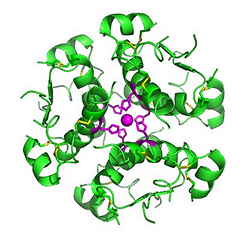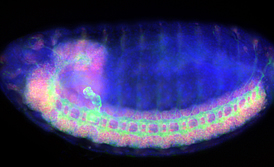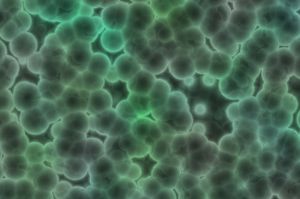Please explain your research for the general public.
I do a whole bunch of different kinds of research, with most of it focused around issues of women’s health and relationships between patients and doctors. One of the projects that I’ve been working on for a while is a history of breast cancer treatment and experience in 20th century Britain. What I want to know is how has treatment changed in Britain over the course of the last century, but also how has the experience of being treated for breast cancer changed.
In relation to my research, I am working on a newer project on women’s cancer screening and prevention. Basically the project is about how interventions like cervical smears and the mammograms became expected parts of women’s healthcare. I am looking at how interventions become a way for women to think about the status of their health in their everyday lives; part of this looks at how these types of treatments were built into the National Health Service.
How does this research benefit the general public?
Breast cancer services in the UK are often used as a proxy for the state of Britain’s commitment to women’s healthcare and I want to know how this came to be. The project will also explain why certain practices are organised the way that they are, for example, you get cervical cancer screenings from your GP whereas you get breast cancer screenings through specialised centres and so my research hopes to answer how this happened. I think we all need to know why our healthcare system is set up this way.
The project also allows me to understand how everyday people receive health care; it gives me the ability to understand what it is like for patients who have to go through the current health care system in comparison to patients from earlier in the 20thcentury and how these changes in practices affect the patient.
How did you first get interested in the history of science and medicine?
Well it’s sort of a long path. I started out, like many people in the History of Science, Technology and Medicine, really interested in science as a kid. I used to like to read old medical books and old science books. I actually went to University in the US and I wanted to become a research biologist. I loved working in the lab but I was not so good at other elements of research and at the same time I found that what I really cared about was the history of science and medicine. Doing History is great for the curious, because it’s basically reading other people’s mail!
I worked for a while as a technical writer and then I went onto graduate school in history and sociology of science. At that point I decided I actually wanted to look at how it is that everyday people learn about science and medicine.
Did you have any science heroes growing up? Who inspired you?
I was a big reader as a kid and I loved reading biographies of scientists and I especially loved reading biographies of women scientists; Marie Curie of course, but lots of others too. Like a lot of people of my age group and that are American, the thing that really did it for me was Carl Sagan and Cosmos. I realised later that this was partly because he didn’t really just tell you the scientific information, but he gave you a really good picture of how that information came to be. He made it clear that you have to understand the history to really understand the present and the future and I think he was terrific at that!
How has working here in Manchester helped you?
It’s helped me a lot to work here in Manchester, especially at the Centre for History of Science, Technology and Medicine, because CHSTM is internationally known with a really strong sense of cross-discipline collaborations. I have great colleagues and there are a lot of elective and joint projects that we have going on and it’s really good in that sense because as a historian a lot of the work that you do is individual. When you sit in the archives you’re looking at papers on your own but being able to do historical projects whilst working with other people is really special. Manchester has been great!
Manchester has also been really great because there’s a lot of interest all over the University in the human elements of medicine. I have colleagues in Humanities, in Medicine and Human Sciences, and here in Life Sciences, that are not historians, who all want to think about the more human experience side of biomedicine. In fact, we’ve started a new group that’s called the Medical Humanities laboratory and that is bringing together those people from all over the University to look at the relationships between art, history and science.
What do you do outside of work?
Anyone who follows my Twitter Feed will know that I am a very avid knitter and crafter. I probably tweet as much about knitting as I do about history!
Anyone who has come to a CHSTM seminar will have probably seen me knitting during the seminar itself because it really does help me concentrate better. It allows me to get my nervous energy out by knitting a sock whilst I try to think of a question to ask. I also read a lot of mystery novels and, of course, I do a lot of things like travelling and visiting museums.
 vessel and consequently blood flow. We also know that vascular disease is one of the main causes of death in the world – especially in Westernised countries. This actually raises the need to find urgent and effective treatment. One of the main features of vascular disease is endothelial and/or smooth muscle dysfunction which leads to a reduction in the endothelium-dependent vasodilatation or increase in smooth muscle constriction. There are other factors that contribute to the dysfunction of endothelial and smooth muscle cells such as changes in the expression and/or function of membrane ion channels as well as impaired intracellular calcium signaling pathways. My research therefore focuses on trying to understand the mechanisms of endothelial and smooth cells dysfunction, how they communicate with one another and, more importantly, how this is affected by various diseases with emphasis on cardiovascular disease.
vessel and consequently blood flow. We also know that vascular disease is one of the main causes of death in the world – especially in Westernised countries. This actually raises the need to find urgent and effective treatment. One of the main features of vascular disease is endothelial and/or smooth muscle dysfunction which leads to a reduction in the endothelium-dependent vasodilatation or increase in smooth muscle constriction. There are other factors that contribute to the dysfunction of endothelial and smooth muscle cells such as changes in the expression and/or function of membrane ion channels as well as impaired intracellular calcium signaling pathways. My research therefore focuses on trying to understand the mechanisms of endothelial and smooth cells dysfunction, how they communicate with one another and, more importantly, how this is affected by various diseases with emphasis on cardiovascular disease.

